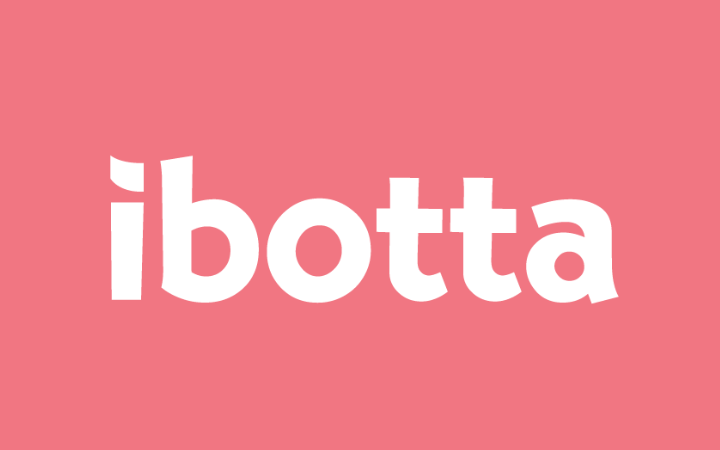
Smart Strategies to Save $2000 in Just 2 Months on a Tight Budget
Save $2000 in Just 2 Months on a Tight Budget
Saving money can often feel like a daunting task, especially when you’re facing financial hardship. However, with some strategic planning and a commitment to making small changes, it’s entirely possible to save $2000 in just two months, even on a tight budget. Whether you’re trying to build an emergency fund, pay off high-interest debt like credit card bills or student loans, or simply reach a specific savings goal, every bit counts. In this guide, we’ll outline fifteen practical steps that can help you achieve your financial objectives while emphasizing smart financial decisions that will enhance your overall financial security.
✨ We hope you enjoyed these photos! If so, please consider sharing them on Pinterest by clicking the Pin Button on each image. Your support helps us connect with more people and spread creativity. Thank you so much! 💖
This post contains affiliate links. If you purchase through these links, I may earn a modest commission at no extra cost. Please review my privacy policy for more details.
To save money, start by tracking your expenses, cutting unnecessary costs, and finding simple ways to save more money each month.
Step 1: Assess Your Current Financial Situation
The first step in saving money is to take a hard look at your current financial situation. Start by gathering your bank statements and reviewing your monthly expenses, which include everything from your electric bill and car payment to grocery costs and subscription services like streaming platforms. Understanding where your money goes will help you identify unnecessary expenses. Use financial calculators to create a detailed budget that outlines your income and expenses, focusing on where you can cut back. This assessment is crucial because it sets the foundation for your savings journey.
Step 2: Take Advantage of Cashback and Rewards Programs
Another effective way to boost your savings is by utilizing cashback and rewards programs offered by various retailers and credit cards. Many financial institutions have programs that allow you to earn cashback on everyday purchases, which can significantly add to your savings. Consider signing up for a cashback credit card that offers rewards on grocery purchases or gas, ensuring that you’re earning money while spending on necessities. Just make sure to pay off the balance in full each month to avoid interest charges, as high-interest debt can negate the benefits of these programs.
I’m using Rakuten to get Cash Back at my favorite stores. Hate for you to miss out, so join now with my invite and you’ll get $30 after you spend $30.*
Join Swagbucks to earn rewards for everyday activities like shopping, watching videos, and taking surveys! It’s a fun and easy way to make extra money online, with points that can be redeemed for gift cards or cash. Plus, you can earn bonuses when you refer friends, making your earning potential even greater!
Ibotta is a fantastic app that lets you earn cashback on everyday grocery purchases, making it a smart way to save money while shopping. With offers at thousands of stores, you simply unlock deals, shop, and upload your receipt to earn real cash back. Joining Ibotta not only helps you stretch your budget further but also rewards you for spending on things you already buy—it’s a win-win!
Step 3: Identify Unnecessary Expenses
Now that you have a budget, it’s essential to pinpoint and eliminate unnecessary expenses. This could involve cutting back on luxury items or services that don’t add value to your life. For example, consider canceling unused gym memberships or limiting trips to coffee shops. Take a close look at your monthly bills, such as homeowner’s insurance and car insurance, to see if you can find cheaper service providers or adjust your coverage. Redirecting the money saved from these unnecessary expenses into your savings account can quickly add up to significant amounts.
Step 4: Increase Your Income with a Side Hustle
If your budget is tight, one of the best ways to save extra money is to increase your income. Consider taking on a side hustle that fits your skills and schedule. This could be anything from freelance work to selling handmade crafts or offering services like tutoring or pet sitting. In today’s gig economy, there are plenty of opportunities to make additional income. Platforms like TikTok can also serve as a way to promote your skills or products, helping you reach a wider audience. The extra money you earn can be directly funneled into your savings goals, making it a powerful strategy for reaching your $2000 target.
Step 5: Utilize High-Yield Savings Accounts
As you begin to save, consider opening a high-yield savings account to maximize your interest earnings. Unlike traditional savings accounts, these accounts offer higher interest rates, allowing your money to grow faster. Financial institutions like Atomic Invest provide a wide range of financial products, including high-yield savings accounts that are FDIC-insured, ensuring your money is safe. With the added benefit of compound interest, even small amounts can accumulate significantly over time. This is a good way to ensure that your savings are working for you while you focus on reaching your financial goals.
Step 6: Automate Your Savings
To make saving money easier, automate your savings. Set up automatic transfers from your checking account to your savings account right after you receive your paycheck. This method helps you save without having to think about it. By treating your savings like a non-negotiable monthly expense, you’ll find it easier to reach your savings goals. Many financial experts recommend saving a percentage of your monthly income; this can be a good starting point. You could aim to save 20% of your monthly income, which will help you accumulate savings faster, particularly if you’re diligent about keeping expenses low.
Step 7: Track Your Progress and Stay Motivated
As you work towards saving $2000, it’s essential to track your progress regularly. Use interactive tools or apps to monitor your savings and expenses, making adjustments to your budget as necessary. Celebrate small milestones along the way to keep your motivation high. For example, if you save $500 in the first two weeks, treat yourself to a small reward that doesn’t derail your budget—perhaps a movie night at home rather than a costly outing. Keeping your financial goals in sight and acknowledging your achievements can help maintain your commitment to saving.
Step 8: Create a Realistic Budget
Once you’ve assessed your financial situation, the next step is to create a realistic budget. This should include a detailed breakdown of your monthly income and expenses. Aim to allocate funds towards your savings goals and an emergency savings account. Remember, every dollar saved is a step closer to your target. For instance, if your grocery budget is currently set at $600, consider how you can reduce it to $450 without sacrificing quality. Small changes like meal planning or shopping sales can yield significant savings over time. By maintaining a budget, you’ll ensure that you stay on track and avoid impulse purchases that can derail your financial plans.
Step 9: Shop Smart and Use Coupons
Finally, smart shopping can play a significant role in saving money. Before making any purchases, take the time to look for coupons or discount codes. Websites and apps that aggregate deals can help you find savings at your favorite retailers. Additionally, consider buying in bulk for items that you frequently use; this can lower your grocery bill in the long run. By incorporating these strategies, you’ll be making informed financial decisions that contribute to your goal of saving $2000 in two months.
Step 10: Reevaluate Your Monthly Subscriptions
Take a close look at your monthly subscriptions and memberships. Many people overlook recurring charges, which can add up significantly over time. Consider canceling any subscriptions you don’t use frequently or don’t find valuable, such as streaming services or magazine subscriptions. If you can’t bear to part with them entirely, see if there are family or friend plans that offer lower rates per person. This reevaluation of your commitments can free up additional funds that can be redirected into your savings account.
Step 11: Set Up a Savings Challenge
A fun and engaging way to boost your savings is to set up a savings challenge. For example, you could start a “52-week challenge” where you save a small amount of money each week, gradually increasing the amount over time. Alternatively, consider a “no-spend month” where you only purchase essentials. These challenges can create a sense of urgency and excitement around saving money, making it easier to stick to your goals. Share your progress on social media to encourage others and hold yourself accountable.
Step 12: Seek Professional Financial Advice
If you’re struggling to make a significant impact on your savings, seeking advice from a financial expert can be beneficial. A financial adviser can provide personalized strategies tailored to your specific situation and help you navigate complex financial products. Many institutions offer free initial consultations, which can be a good opportunity to get professional insight without a financial commitment. This guidance can help you make informed decisions and potentially uncover opportunities for savings you hadn’t considered.
Step 13: Use the Envelope System for Discretionary Spending
Implement the envelope system for your discretionary spending. Allocate a specific amount of cash for categories like groceries, entertainment, and dining out, and place the cash in labeled envelopes. Once the cash is gone, you can’t spend any more in that category for the month. This method promotes mindful spending and can help you stay within budget. Any leftover cash can be added to your savings goal, giving you extra motivation to stick to your limits.
Step 14: Reduce Utility Costs
Take proactive steps to lower your utility bills. Simple changes, such as turning off lights when not in use, unplugging electronics, and using energy-efficient appliances, can significantly impact your monthly expenses. Consider conducting an energy audit to identify further ways to save on your electric, water, and gas bills. The money you save can be redirected to your savings account, contributing to your $2000 goal.
Step 15: Join Community Programs and Resources
Many communities offer resources to help individuals save money. Look into local programs that provide assistance with groceries, housing, or utilities. Community centers or churches may offer food banks, free workshops, or financial counseling services. Utilizing these resources can alleviate some of your financial burdens and free up funds for savings.
Step 16: Focus on Reducing High-Interest Debt
Reducing high-interest debt is a good idea if you want to improve your financial situation. Start by listing your debts, focusing on credit card debt and other high-interest loans. Prioritize paying off the debt with the highest interest rate first, as this can save you a lot of money in the long run. The extra money you save from not paying high-interest fees can be redirected into your savings account, contributing to your savings goals. Consider consolidating loans or negotiating with creditors for better terms if possible.
Step 17: Make Use of Tax Advice and Financial Tools
Seeking tax advice can provide insights into ways to minimize your tax liability and maximize your after-tax income. Understanding deductions and credits can save you a significant amount of money, which can then be deposited into your high-yield savings account. Additionally, consider using personal finance apps to track your expenses, monitor your spending habits, and help you make better financial decisions. This can lead to small changes that accumulate into substantial savings over time.
Saving $2000 in just two months on a tight budget may seem like a daunting challenge, but with determination and strategic planning, it is entirely achievable. By assessing your financial situation, creating.
Click Here for 250 Money Saving Tips









